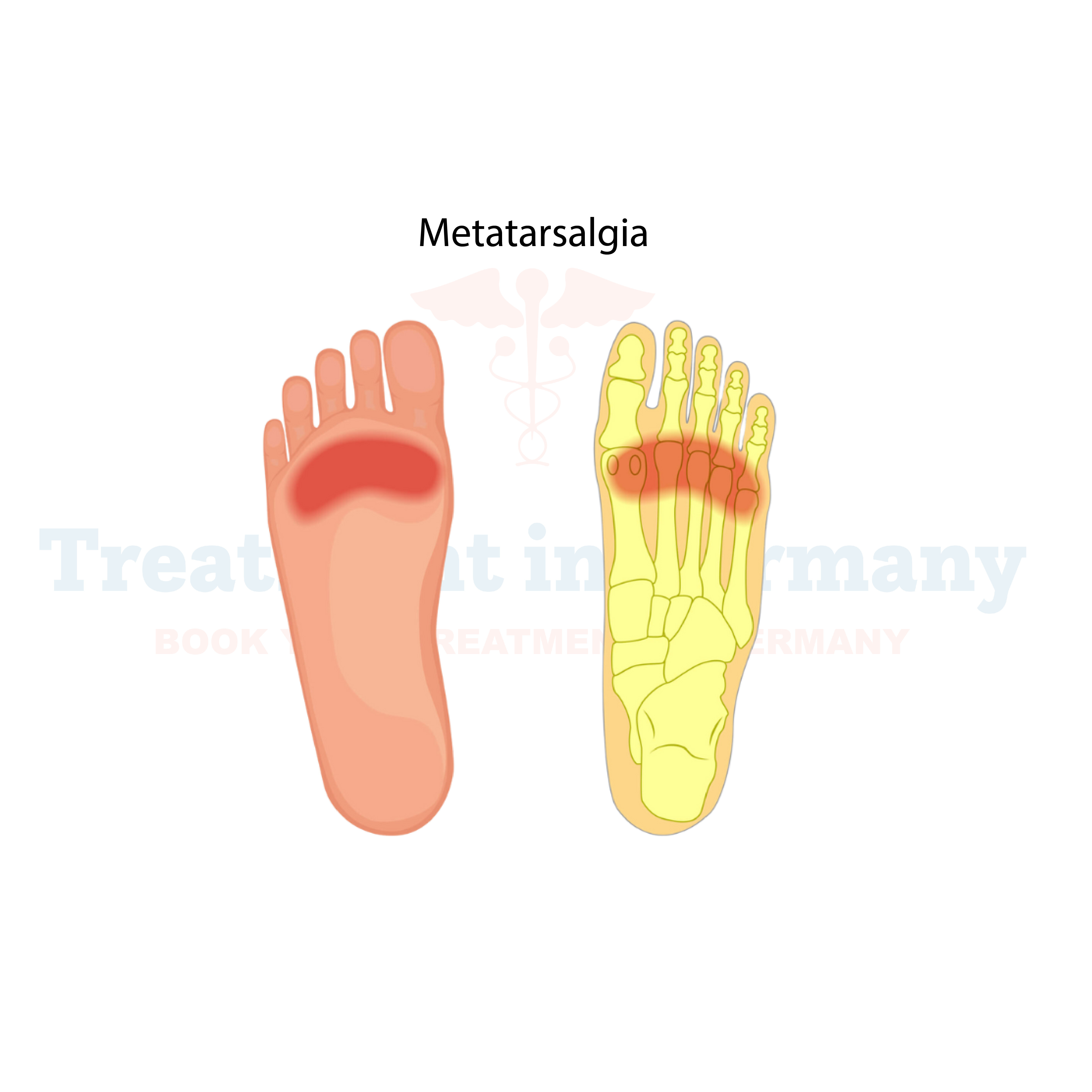What is Metatarsalgia?
Metatarsalgia is a condition characterized by pain and inflammation in the ball of the foot, specifically around the metatarsal bones. These are the long bones in the mid-foot region, connecting the toes to the ankle. The discomfort typically worsens when walking or standing and can affect one or both feet.
Side effects of Metatarsalgia:
The symptoms of Metatarsalgia can vary from person to person but commonly include:
- Pain and tenderness: You may experience a sharp or aching pain in the ball of your foot, which can worsen with activity.
- Swelling: Inflammation around the metatarsal heads can lead to swelling and discomfort.
- Difficulty walking: The pain may make it difficult to walk or bear weight on the affected foot.
- Numbness or tingling: Some individuals may experience sensations of numbness or tingling in the toes.
These symptoms can significantly impact daily activities and quality of life if left untreated.
How is Metatarsalgia diagnosed?
Diagnosing Metatarsalgia typically involves a thorough physical examination by a healthcare professional. Your doctor will inquire about your medical history, symptoms, and any recent changes in activity or footwear.
They may also perform tests to assess the range of motion in your foot and identify areas of tenderness.
In some cases, imaging studies such as X-rays or MRI scans may be ordered to rule out other underlying conditions such as stress fractures or arthritis.
Potential treatments of Metatarsalgia:
Treatment for Metatarsalgia aims to alleviate pain, reduce inflammation, and address any contributing factors. Depending on the severity of your symptoms, your doctor may recommend:
- Rest and ice: Taking a break from activities that exacerbate the pain and applying ice packs to the affected area can help reduce inflammation and discomfort.
- Footwear modifications: Wearing supportive, cushioned shoes with a wide toe box can help alleviate pressure on the metatarsal bones. In some cases, custom orthotic inserts may be prescribed to provide additional support and redistribute weight more evenly.
- Physical therapy: Engaging in specific exercises to strengthen the muscles in the feet and improve flexibility can help relieve symptoms and prevent recurrence.
- Medications: Over-the-counter pain relievers such as ibuprofen or acetaminophen may be recommended to manage pain and inflammation. In some cases, corticosteroid injections may be administered to reduce swelling and alleviate discomfort.
- Surgery: In rare cases where conservative treatments fail to provide relief, surgical intervention may be considered to address underlying structural abnormalities or correct deformities contributing to Metatarsalgia.
👉 Contact us for further information and receive a
complimentary consultation.

.webp)
.webp)
 (1).webp)
 (1).webp)

.webp)
.webp)
 (1).webp)
 (1).webp)
